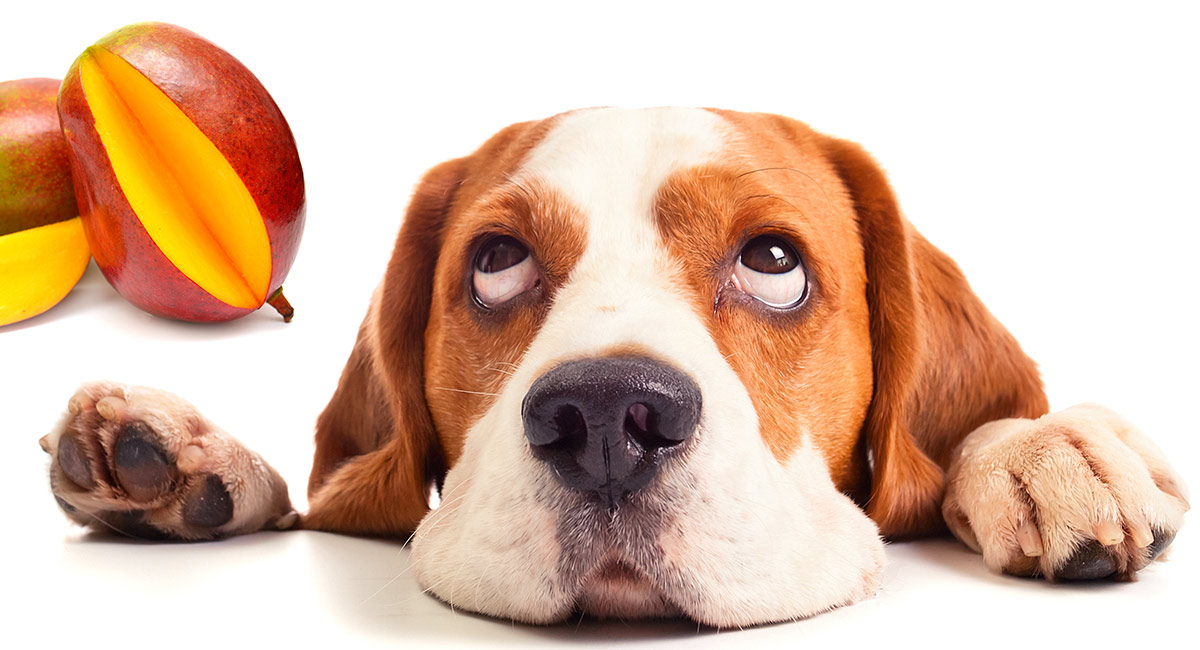Welcome Dog Health Updates
Can Be Mango Safe for Dogs to Eat?
Mangoes, with their sweet and juicy insides and rough, but edible skin over the outside, are flavorful and great for humans. This amazing fruit is indigenous to Asia and India, and there are nearly 500 varieties of this fresh fruit on the planet. A few mangoes may be small, only the size of your palm, but bigger mangoes can consider to five pounds. All mangoes are packed full of vitamins and minerals. However, can dogs have mango, too?
The inquiry, can dogs eat blossom, can get you two entirely different answers. Let's find more information about mango for dogs under control.

Can Be Mango Safe for Dogs to Eat?
To start, absolutely don't feed your pet the pit of a blossom -- more on this below. The skin of a blossom might be too demanding for your dog to eat up, too. The primary, fruit part of a mango, nevertheless, is really a excellent source of Vitamin A, B6, C and E also it's safe for dogs.
Recommends this method for serving mangoes to your dog:"Peel the thick mango skin and get rid of the pit, and your furry friend will like somewhat of tender mango flesh," author Melvin Peña advises.
There Was a Caveat When It Comes to Mango for Dogs
Though mangos have a lot of nutritional benefits, should you feed them to your pet? "Mangoes are safe in that they're not toxic but they do have a great deal of sugar and I really don't advocate feeding much fresh fruit to dogs for this reason," he says.
The United States Department of Agriculture (USDA) writes that a whole mango has 46 grams of sugar . While fruit-based sugar is okay in moderation, too much sugar at a pet's diet could cause health issues in the future, including diabetes.
Can Automobiles Eat Mango Pits?
A cherry consists of 3 parts: the out-skin, the juicy fruit inside and also the seed/pit. While skin and flesh of this fruit is safe, there is conflicting advice about if the pit is toxic to dogs or not. Some fruit seeds and stalks do contain tiny amounts of cyanide. ,"strawberry is among those items with a pit large enough to induce gastrointestinal blockages and [has] toxic contents."
In contrast, the Pet Poison Control and the ASPCA do not list mango as poisonous inside their own poisonous crops list.
A study from 2011 at the International Food Research Journal doesn't list mango seed as containing any such thing toxic either. In fact, it found that there were a lot of nutritional benefits inside the seed. Because the researchers note,"The outcomes of proximate analysis demonstrate that strawberry seed kernel is an nutritional promising seed due to its high quantities of carbohydrate and oil. The consequences of vitamin assayed demonstrated that mango seed is very rich in calcium, magnesium, magnesium and potassium. The current presence of antioxidant vitamins such as vitamin C, Vitamin E and A indicates that strawberry seed can be used as an alternative source of these minerals."
The Final Word Mangoes for Automobiles
So, can and should your pet have mangoes? Surely do not let your dog get access to this pit. Does this keep your pet protected from any toxins that a mango pit may or may not consume, in addition, it keeps your pet safe against the legitimate danger surrounding the pit: The problems it might cause when your pet swallows it.
The cherry pit is so large, and if swallowed, your dog might easily choke on it. Even though he does swallow it and it ends up from his stomach or intestines, it may become stuck there because it might be too big to pass naturally. In case you suspect your dog has eaten a cherry pit, check out signals of foreign barrier. According to VCA Hospitals, such comprise:
Throwing up
diarrhoea
Abdominal pain or tenderness
Reduced appetite or anorexia
Straining to defecate or producing small quantities of feces
Lethargy
Changes in behaviour such as biting or growling when picked up or treated across the abdomen.
If you do feed your dog some mango fruit, make sure it's peeled and serve it on your dog in moderation, as well as introducing it minus the gap.